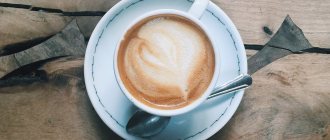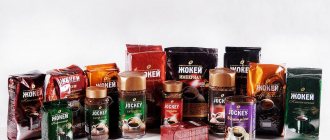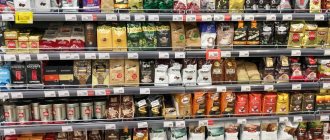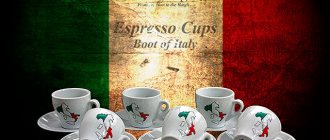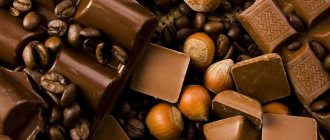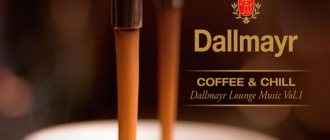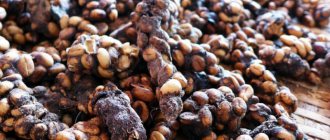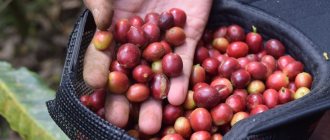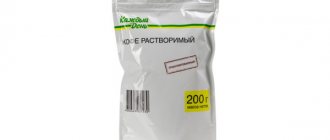Lani Kingston. “Perfect coffee. The Science and Art of Cooking"
Lani Kingston received her first education in the field of film and television, but for the past decade she has been professionally engaged in projects related to the food industry. She now runs the Four Seasons of Food agency, which specializes in consulting in the field of catering and food production. Lani has been writing articles about food and drink for various publications for quite some time, but “Perfect Coffee” is her first book.
How to Make Coffee: The Science Behind the Bean is the original title of this book. However, there is little written in it about how to prepare coffee: the section describing the step-by-step preparation of coffee in various devices takes up only a fifth of the book. Everything else is science: growing and producing coffee, the structure and chemical composition of coffee beans, processing and roasting processes, the subtleties of choosing water and frothing milk. Kingston's book can be read as a textbook that will help structure your knowledge about coffee and get an idea of how to prepare coffee correctly.
The book will appeal to those who want to dive into theory and look at coffee from a scientific point of view, as well as those for whom it is important to understand the basic principles of brewing any coffee.
“Perfect coffee. The Science and Art of Cooking" was published in 2015, translated into Russian and published by the KhlebSol publishing house in 2021. You can buy this book on the Torrefacto website.
Invigorating reading: 8 books about coffee that will dramatically improve your knowledge
Here is a brief overview of 8 books about various aspects of coffee. These books will be your guides in the multifaceted world of the coffee industry. The review includes books aimed at a general audience, as well as manuals designed for baristas and roasters.
The Professional Barista's Guide by Scott Rao
Here's an expert guide to preparing a perfectly balanced cup of espresso. Its author is Scott Rao, a very famous person in the coffee world, a professional barista, roaster and author of several books about coffee. “The Professional Barista’s Manual” was published in Artemy Lebedev’s studio. The book is recommended by many coffee experts and professional baristas. It is notable for the fact that in it the author has sorted out all the information necessary for making coffee. Scott Rao is known for his clarity, clarity of thought, and ability to communicate complex terms simply. Therefore, the book is easy to read and will suit even a person inexperienced in coffee topics. The manual contains many high-quality illustrations and step-by-step instructions.
In his desire to present information efficiently and accurately, the author is reminiscent of another famous barista, David Schomer (his book will be discussed below). But, unlike Schomer, Scott Rao's book is not overloaded with technical information in the spirit of "the burrs of a coffee grinder become dull after using approximately 500 pounds of coffee beans."
For whom: for a wide range of coffee lovers;
Price: 1500 rub.
“Everything but Espresso” Scott Rao (“Everything but Espresso” Scott Rao)
A simple, clear and intelligible book about alternative methods of brewing coffee from the aforementioned Scott Rao. Among them are such popular methods as French press, pour over, flask, Chemex and others. Everything But Espresso is divided into three main sections, from coffee extraction and measurement techniques to achieving the optimal flavor profile and water chemistry. This guide is ideal for those who are in love with caffeine, but have not stopped at espresso in their exploration of the world of coffee. The manual is replete with high-quality illustrations and graphics. Unfortunately, it has not yet been translated into Russian. Therefore, knowledge of English is required to fully immerse yourself in this excellent instruction.
For whom: for enthusiastic people who want to explore the versatility of coffee; for lovers of “alternatives”;
Price: 34 $
"World Atlas of Coffee. From grain to cup." James Hoffmann
The book has already appeared on our blog as a gift for a coffee lover. This unique guide to the world of coffee was written by famous British barista, roaster and blogger James Hoffmann. The first edition was published in 2014, but the book is still incredibly popular and is among the top sellers on Amazon. 256 pages of professional research into the world of coffee, from its origins to a detailed description of the main methods of its processing and preparation of the drink. It also pays attention to such purely professional concepts as “Fair Trade”. The book is published in hardback. The quality of the paper, illustrations and design of the book is excellent, it’s definitely not a shame to give one like this. The book has been translated into Russian and is available in many stores.
For whom: for those who are just discovering the wonderful world of coffee;
Price: 1500 rubles.
“Espresso coffee. A guide for professionals." Shomer S. David
“Espresso coffee. A Guide for Professionals" is a unique application guide for those who want to master the art of making super espresso. Its author is the owner of the Vivace coffee shop in Seattle and a real “geek” from the world of coffee, David Schomer. Many who have been to his coffee shop note the unforgettable taste of the espresso they tasted there. Shomer is also one of the founders of the specialty coffee culture and “third wave coffee.” His book has long been and remains a cult work for most baristas in the world. The translation was edited by the chef barista of the famous coffee shop chain “Coffeein” - Tatyana Elizarova, Olga Melik-Karakozova, Maxim Bobrenev.
This book is the most in-depth professional look at espresso making. Most of the book is a description of the technical intricacies of preparing the drink. There is no room for alternative methods of preparing coffee. The author in his work identified and listed all the factors that directly affect the preparation of a high-quality cup of espresso: water, freshness of beans and grinding, grinding quality, extraction time. The book also teaches proper equipment handling, espresso-based beverage preparation, and staff training. Despite the fact that the book is more like technical documentation, it is quite easy to read. The book is not easy to find on sale. But those who were lucky enough to purchase it put it in a place of honor in their book collection.
For whom: for geeks, perfectionists, novice baristas and other adherents of the horn and pump of an espresso coffee maker;
Price: 1700 rub.
“How Starbucks was Built Cup by Cup” by Howard Schultz, Yeung Dori Jones
The book “How Starbucks was Built Cup by Cup” is a detailed chronicle of how the coffee company gained worldwide fame by putting its heart and soul into its business. And, if the name “Starbucks” doesn’t set your teeth on edge, then it’s definitely for you! Howard Schultz, who became CEO of Starbucks more than 30 years ago, transformed it from a small company with six coffee shops in Seattle into a successful business operating in 50 countries. This book is the history of Starbucks. A story full of ups, downs, doubts, stubborn movement towards a goal, searches for new solutions, building a team of professionals who firmly believe in their work. This is almost a fictional novel about coffee. So, grab a cup of your favorite aromatic drink and go on an exciting journey into the world of Starbucks. Who knows, maybe Schultz’s work will help you build your own coffee empire!
For whom: for lovers of success stories; for those who want to open their own coffee shop; for coffee industry workers; for Starbucks fans;
Price: 600 rub.
"A Reference Guide to Ethiopian Coffee Varieties" Getu Bekele, Timothy Hill
A book about coffee from the cradle of coffee - Ethiopia. Ethiopian coffee is one of the most sought after in the world. Many popular varieties and varieties of coffee grow in this country, from the classic Arabica coffee from Yirgachiff to the fashionable Geisha and Wush-Wush varieties. The Ethiopian Coffee Reference Guide is a tool for a limited number of coffee industry professionals. It was written by renowned Q-grader and buyer Getu Bekele and Coffee Director at Counter Culture Coffee Timothy Hill. These experts have created an excellent guide for professionals who want to improve their level and learn a lot about Ethiopian terroirs and local coffee varieties that are often not found anywhere else in the world. This book contains about 40 years of unique research that will dramatically increase the level of knowledge. This knowledge will help specialists in their professional activities and ultimately affect the quality of the final product - a cup of coffee. The book is in English. Click on the link to watch a video introduction to the book from co-author Getu Bekele.
For whom: for specialists, roasters, buyers and Q-graders
Price: 35 $
“Guide to identifying defects in washed green Arabica coffee” SCA (“Arabica Green Coffee Defect Handbook - Russian”)
Another publication for coffee industry professionals. This time we have a guide for roasters and people who purchase green coffee beans for subsequent roasting. Everyone knows that when growing coffee beans, defects occur one way or another. They arise due to pests, errors during cultivation, errors during processing and storage of grains. This manual, published by the Specialty Coffee Association (SCA) in Russian, will help specialists check the quality of purchased raw materials and detect defects in green coffee. The book includes the SCA standard for washed Arabica beans, as well as a standard classification that contains the following: sample weights, defect equivalent table, moisture content, bean size, types of defects, flavor profiles and the standard for the number of roasted Quaker coffee beans.
The book was approved by the standards committee of the SCA research center, translated into Russian and published in electronic form. This makes it easier to use in the field: you don’t need to carry a paper manual with you, just download the book to your tablet or smartphone.
For whom: for roasters and buyers;
Price: $35 (for electronic version)
"The Craft and Science of Coffee" by Britta Folmer
Coffee has firmly entered our lives. For some it is just a favorite drink, for others it is an object of scientific study, for others it is a real craft. Nespresso, together with more than 60 coffee industry experts, has created an amazing book that combines the science of coffee with the experience of a large number of coffee artisans. Representatives from all sectors of the coffee industry, from local farmers to Q-graders and marketers, participated in the creation of the book.
On 556 pages, this comprehensive work examines the chain of 21 stages that coffee goes through, from sowing to the aromatic cup of the enchanting drink. The book allows you to discover many new aspects of coffee and gives a deeper understanding of the complexity and diversity of coffee culture. “The Craft and Science of Coffee” even addresses issues such as the impact of climate change on the cultivation of coffee bushes and the formation of the cost of a cup of coffee.
The publication is available in English only. Follow the link for a video presentation of the book.
For whom: for consumers and professionals who want to understand the diversity of the coffee world;
Price: 125 $
James Hoffmann. "Coffee as a Profession: The Best of the Jimseven Blog"
The second book by the author of The World Atlas of Coffee, famous coffee expert and popularizer of specialty coffee, James Hoffmann, is a collection of selected articles from his blog. In the original it is called: The Best of Jimseven 2004-2015. The title “Coffee as a Profession” is here rather to make it immediately clear what this book is about and to whom it is addressed.
The book consists of four sections: “About espresso”, “About brewing coffee”, “Coffee business”, “About a career in coffee”. Each of them contains articles on a variety of topics, all of them are dated, but arranged not in chronological order, but in such a way as to create a certain logical sequence and structure. At the same time, the author himself says that “the book is designed in such a way that you can plunge into it from time to time, and not read from cover to cover.”
“Coffee as a Profession” is definitely not for beginners in the coffee world, but it will appeal to those who assume that they have already figured it all out and are ready to learn more. Hoffmann experiments, reflects, sometimes asks unexpected questions (my favorite is “What does an apple taste like?”), looks at familiar things from a different angle and makes us think: what do we really know about coffee?
The book was published in 2021, translated into Russian and published by Palmira publishing house in 2021.
annotation
This book is the most in-depth professional look at espresso making. The author can rightfully be given the status of the founder of the theory of making “live” espresso, coffee with which they “play”, adjust the grinding, taking into account the subtle nuances of changes in temperature and humidity. Espresso culture is too young, it is about 100 years old, but a great future awaits it . The central figure in it is the barista, a coffee sommelier who must create a drink in such a way that its taste fully matches the aroma of freshly ground coffee. In the book, the author identified and listed all the factors that directly affect the preparation of a high-quality cup of espresso. The book teaches not only how to prepare espresso, but also how to properly operate equipment, prepare espresso-based drinks, and train staff. The book is a unique applied manual for both those who want to master the art of barista and professionals. It is also interesting for everyone who, by the nature of their activities, is involved in roasting and selling coffee.
To all articles
Espresso is a complex and interesting drink. He is considered one of the most picky about cooking conditions and barista skills. To make delicious espresso, you need to carefully select the bean, monitor the cleanliness of the equipment, water pressure and temperature, coffee dosage, tempering and preparation time. Let's talk about this in more detail.
For espresso, we recommend using specially designed espresso blends and single origins. They are roasted differently than alternative cooking methods, with individual roast profiles and typically a little darker. This is done so that during preparation in a coffee machine the taste is sweeter and more balanced.
We do not recommend choosing a light roast, which is intended for alternative brewing methods. In espresso, such coffee will turn out to be sharply acidic, and its body will be watery.
Equipment cleanliness
The equipment must be clean - this is one of the most important factors that affects the taste of the espresso. The coffee group, dispersion mesh, basket, holder and coffee grinder quickly become dirty, and coffee oils and old ground coffee, even in small quantities, greatly affect the taste. In order not to reduce all your efforts to nothing, you need to regularly clean the coffee machine and coffee grinder.
We recommend cleaning the internal surfaces of the holder and the dispersion mesh with special cleaning agents every 50 espresso shots, but at least once a day. The coffee grinder can be cleaned daily with a regular brush and monthly with cleaning products.
Water pressure
The optimal water pressure in a coffee machine is from 8.2 to 9 atmospheres. It needs to be set up initially and monitored with a pressure gauge so that it does not go astray. To do this, you need to make a coffee tablet, insert the holder into the group and turn on the spill. At this point, you need to monitor the pressure and adjust if necessary. The adjustment itself occurs differently for each coffee machine; we recommend looking at the instructions or contacting a specialist.
- Barista - who is he, what is his profession and what does he do?
Any numbers are just a starting point. Delicious espresso can be prepared at lower or higher pressure. But to do this, you need to understand how and what processes occur during extraction in order to correctly compensate for some changes with others. Nevertheless, it is better to start with the classics.
Water temperature
The choice of water temperature depends on the specific type of coffee and the degree of roasting. With any method of preparation, except cold brew, light roast coffee is prepared at a temperature of 93-95°C, medium roast - 91-93°C, dark roast - 89-91°C.
You need to adjust the temperature depending on the result obtained, but since we are talking about making espresso, we recommend setting the temperature to 93°C. This is the standard used at most barista championships and to which most modern roasters roast their coffee. Unlike alternative brewing methods, where the water temperature is a very active variable, with espresso it is adjusted once for a long time. And to regulate the taste, adjust the grind size or dosage of coffee.
Some espresso machines do not have precise temperature control because they only have one boiler with a heat exchanger. It is used to prepare steam, boiling water and espresso at the same time. And the temperature is regulated by a mechanical bolt on the pressure switch, and you have to rely only on taste: if the coffee is too acidic, raise the temperature, if it’s too bitter, lower it.
Coffee dosage
The dosage of coffee depends on the size of the holder basket: they are single or double. We recommend preparing espresso in a double basket because the extraction is more stable and uniform in it, due to a more even mesh structure.
Double baskets come in smaller and larger volumes: one holds approximately 16 grams of coffee, the other - 21 grams. We recommend using larger baskets with a dosage of 17-20 grams of coffee and using the coffee weight that is written on the grid. That is, do not prepare espresso from 16 grams of coffee in a basket designed for 21 grams and vice versa.
If your basket is not marked, we recommend making sure that the coffee tablet does not reach the coffee group dispersion mesh slightly. To do this, make several tablets in a holder in 1 gram increments and insert them into the group without boiling until a slight imprint of the bolt or mesh remains on the tablet. Then reduce this weight by 3 grams - this will be the ideal weight for your holder.
A scale is one of the main tools for getting good espresso. To ensure consistent results, we recommend weighing the coffee on a scale in 0.1 gram increments before preparing each serving.
Distribution of coffee in the basket and tempering
Under pressure, water always seeks the easiest path to pass through the coffee tablet. That is why, in order for the extraction to proceed correctly and evenly, the coffee must be evenly distributed in the basket: break up the lumps and tamp with a tamper. It's simple in theory, but in practice it will take practice.
- Who is a barista, how much does he earn and what skills should he have?
When the coffee grinder does not have the newest burrs or their diameter is not too large, lumps of coffee form during grinding. We recommend breaking them up using a coffee distributor: for example, OCD Coffee distributor; or a simple toothpick: using rotational movements in a circle, break up all the lumps and distribute the coffee evenly throughout the basket.
Under no circumstances should you tap the tamper on the holder either before or after tempering - this will lead to the formation of channels and the espresso will turn out tasteless.
After distributing the coffee, you need to compact it with a tamper with medium force. We recommend using tampers with a flat base and a diameter as close as possible to the diameter of the holder basket.
Try to temper as evenly as possible, at a right angle. Otherwise, the coffee tablet will be distorted, and the water will unevenly capture its surface. Push dispensers with a limiter along the edge help solve this problem: firstly, they do not allow making a tablet with a distortion, and secondly, they provide stable pressure.
After tempering, you need to remove the remaining ground coffee from the edges of the basket and the “ears” of the holder so that the grains do not bake on the rubber gasket of the group.
Extraction
After tempering, the holder is inserted into the coffee group and the pour is turned on.
When using a coffee machine with a heat exchanger, before installing the holder in the group, you need to spill 50–100 ml of water so that the temperature drops to the working temperature. Usually at this time there is boiling water with hissing, as soon as the hissing stops, you can make espresso.
When using a double-boiler coffee machine, you also need to spill water, but not to drop the temperature, but to clean the dispersion mesh of coffee residues from the previous preparation. In this case, you need to spill significantly less water until it becomes clean.
After installing the holder in the coffee machine, you need to immediately turn on the spill, since chemical reactions already start in coffee at high temperatures. As a rule, espresso is prepared in 23-30 seconds from the moment the pump turns on until it turns off.
- What is espresso coffee and how to prepare it correctly
The weight of the finished drink should be approximately 1.8–2.2 times greater than the dosage. That is, if you use a dosage of 18 grams of ground coffee, the approximate weight of a double espresso should be 32–40 grams. However, the ratio of coffee weight to water weight varies depending on the degree of roasting of the coffee. For relatively light roast coffee, a ratio of 2 to 2.2 is often used, and for dark roast coffee, a ratio of 1.6 to 1.8 is often used.
If the espresso is prepared faster, you need to reduce the grinding; if it is slower, increase it. You need to change the grind level in minimal steps, because espresso reacts very sharply to this. After each adjustment, you need to grind one or two portions of coffee so as not to use the previous grind remaining in the channel.
We recommend starting your experiments with the standard: this is an espresso weighing 36 grams, prepared from 18 grams of ground coffee in 27 seconds at a temperature of 93°C, and after that adjust the parameters as described above.
Despite all the numbers, the main guideline is taste. Even if your dosage, preparation time or weight of espresso differs from the ideal, but the coffee turns out delicious - that’s how it should be.
Customizing the taste
To make it easier for you to adjust the taste of espresso, we have attached a table that will help with this.
When adjusting the flavor, we recommend changing only one parameter at a time. That is, if you change the grind, leave the dosage and cooking time unchanged. And vice versa. This way you will quickly understand which direction you need to move.
| If it's too bitter: | If there is a lot of acidity: |
| — reduce the output coefficient (below two); - reduce the temperature; — reduce extraction time. | — increase the output ratio (above two); - increase the temperature; — increase the extraction time. |
At the same time, bitterness in coffee comes in different types: if bitterness from roasting, for example, dark chocolate or an ash aftertaste, can be corrected using standard methods, then bitterness from chlorogenic acidity, like wormwood, must be corrected on the contrary, as excessive acidity.
The flavor adjustment methods listed above help bring out the flavor inherent in the variety, terroir, processing, and roaster. However, if the coffee is quite acidic to begin with, such as washed Ethiopia, then increasing the extraction too much will result in even more pronounced acidity.
You might be interested in:
General recommendations for making coffee
07 Feb 2021 · 7 min. for reading
38
To leave a comment, you must log in to your personal account or register.
- 3-11-2015, 04:30
- 3 908
magazines / For mothers and children
Name:
Espresso Coffee: A Guide for Professionals
Author:
David S. Shomer
Publisher:
Gourmet Style
Year:
2007
Format:
PDF
Size:
17.0 MB
Quality:
Scanned pages
Language:
Russian This book is the most complete professional look at making espresso.
The author can rightfully be credited with the status of the founder of the theory of preparing “live” espresso, coffee that is “played with”, adjusted grinding, taking into account the filigree nuances of changes in temperature and humidity. Espresso culture is too young, it is about 100 years old, but a great future awaits it . The central figure in it is the barista, a coffee sommelier who must create a drink so that its taste fully corresponds to the aroma of freshly ground coffee. In the book, the author identified and listed all the factors that directly affect the preparation of a high-quality cup of espresso. The book deals not only with the preparation of espresso, but also with the correct handling of equipment, the preparation of espresso-based drinks and staff training. The book is a unique application manual both for those who want to master the art of barista and for professionals. It is also interesting for everyone who, by the nature of their work, is involved in roasting and trading coffee. Download from file-space.org Download from turbobit.net Download from dfiles.ru
Here is a brief overview of 8 books about various aspects of coffee. These books will be your guides in the multifaceted world of the coffee industry. The review includes books aimed at a general audience, as well as manuals designed for baristas and roasters.
The Professional Barista's Guide by Scott Rao
Here's an expert guide to preparing a perfectly balanced cup of espresso. Its author is Scott Rao, a very famous person in the coffee world, a professional barista, roaster and author of several books about coffee. “The Professional Barista’s Manual” was published in Artemy Lebedev’s studio. The book is recommended by many coffee experts and professional baristas. It is notable for the fact that in it the author has sorted out all the information necessary for making coffee. Scott Rao is known for his clarity, clarity of thought, and ability to communicate complex terms simply. Therefore, the book is easy to read and will suit even a person inexperienced in coffee topics. The manual contains many high-quality illustrations and step-by-step instructions.
In his desire to present information efficiently and accurately, the author is reminiscent of another famous barista, David Schomer (his book will be discussed below). But, unlike Schomer, Scott Rao's book is not overloaded with technical information in the spirit of "the burrs of a coffee grinder become dull after using approximately 500 pounds of coffee beans."
For whom: for a wide range of coffee lovers;
Price: 1500 rub.
“Everything but Espresso” Scott Rao (“Everything but Espresso” Scott Rao)
A simple, clear and intelligible book about alternative methods of brewing coffee from the aforementioned Scott Rao. Among them are such popular methods as French press, pour over, flask, Chemex and others. Everything But Espresso is divided into three main sections, from coffee extraction and measurement techniques to achieving the optimal flavor profile and water chemistry. This guide is ideal for those who are in love with caffeine, but have not stopped at espresso in their exploration of the world of coffee. The manual is replete with high-quality illustrations and graphics. Unfortunately, it has not yet been translated into Russian. Therefore, knowledge of English is required to fully immerse yourself in this excellent instruction.
For whom: for enthusiastic people who want to explore the versatility of coffee; for lovers of “alternatives”;
Price: 34 $
"World Atlas of Coffee. From grain to cup." James Hoffmann
The book has already appeared on our blog as a gift for a coffee lover. This unique guide to the world of coffee was written by famous British barista, roaster and blogger James Hoffmann. The first edition was published in 2014, but the book is still incredibly popular and is among the top sellers on Amazon. 256 pages of professional research into the world of coffee, from its origins to a detailed description of the main methods of its processing and preparation of the drink. It also pays attention to such purely professional concepts as “Fair Trade”. The book is published in hardback. The quality of the paper, illustrations and design of the book is excellent, it’s definitely not a shame to give one like this. The book has been translated into Russian and is available in many stores.
For whom: for those who are just discovering the wonderful world of coffee;
Price: 1500 rubles.
“Espresso coffee. A guide for professionals." Shomer S. David
“Espresso coffee. A Guide for Professionals" is a unique application guide for those who want to master the art of making super espresso. Its author is the owner of the Vivace coffee shop in Seattle and a real “geek” from the world of coffee, David Schomer. Many who have been to his coffee shop note the unforgettable taste of the espresso they tasted there. Shomer is also one of the founders of the specialty coffee culture and “third wave coffee.” His book has long been and remains a cult work for most baristas in the world. The translation was edited by the chef barista of the famous coffee shop chain “Coffeein” - Tatyana Elizarova, Olga Melik-Karakozova, Maxim Bobrenev.
This book is the most in-depth professional look at espresso making. Most of the book is a description of the technical intricacies of preparing the drink. There is no room for alternative methods of preparing coffee. The author in his work identified and listed all the factors that directly affect the preparation of a high-quality cup of espresso: water, freshness of beans and grinding, grinding quality, extraction time. The book also teaches proper equipment handling, espresso-based beverage preparation, and staff training. Despite the fact that the book is more like technical documentation, it is quite easy to read. The book is not easy to find on sale. But those who were lucky enough to purchase it put it in a place of honor in their book collection.
For whom: for geeks, perfectionists, novice baristas and other adherents of the horn and pump of an espresso coffee maker;
Price: 1700 rub.
“How Starbucks was Built Cup by Cup” by Howard Schultz, Yeung Dori Jones
The book “How Starbucks was Built Cup by Cup” is a detailed chronicle of how the coffee company gained worldwide fame by putting its heart and soul into its business. And, if the name “Starbucks” doesn’t set your teeth on edge, then it’s definitely for you! Howard Schultz, who became CEO of Starbucks more than 30 years ago, transformed it from a small company with six coffee shops in Seattle into a successful business operating in 50 countries. This book is the history of Starbucks. A story full of ups, downs, doubts, stubborn movement towards a goal, searches for new solutions, building a team of professionals who firmly believe in their work. This is almost a fictional novel about coffee. So, grab a cup of your favorite aromatic drink and go on an exciting journey into the world of Starbucks. Who knows, maybe Schultz’s work will help you build your own coffee empire!
For whom: for lovers of success stories; for those who want to open their own coffee shop; for coffee industry workers; for Starbucks fans;
Price: 600 rub.
"A Reference Guide to Ethiopian Coffee Varieties" Getu Bekele, Timothy Hill
A book about coffee from the cradle of coffee - Ethiopia. Ethiopian coffee is one of the most sought after in the world. Many popular varieties and varieties of coffee grow in this country, from the classic Arabica coffee from Yirgachiff to the fashionable Geisha and Wush-Wush varieties. The Ethiopian Coffee Reference Guide is a tool for a limited number of coffee industry professionals. It was written by renowned Q-grader and buyer Getu Bekele and Coffee Director at Counter Culture Coffee Timothy Hill. These experts have created an excellent guide for professionals who want to improve their level and learn a lot about Ethiopian terroirs and local coffee varieties that are often not found anywhere else in the world. This book contains about 40 years of unique research that will dramatically increase the level of knowledge. This knowledge will help specialists in their professional activities and ultimately affect the quality of the final product - a cup of coffee. The book is in English. Click on the link to watch a video introduction to the book from co-author Getu Bekele.
For whom: for specialists, roasters, buyers and Q-graders
Price: 35 $
“Guide to identifying defects in washed green Arabica coffee” SCA (“Arabica Green Coffee Defect Handbook - Russian”)
Another publication for coffee industry professionals. This time we have a guide for roasters and people who purchase green coffee beans for subsequent roasting. Everyone knows that when growing coffee beans, defects occur one way or another. They arise due to pests, errors during cultivation, errors during processing and storage of grains. This manual, published by the Specialty Coffee Association (SCA) in Russian, will help specialists check the quality of purchased raw materials and detect defects in green coffee. The book includes the SCA standard for washed Arabica beans, as well as a standard classification that contains the following: sample weights, defect equivalent table, moisture content, bean size, types of defects, flavor profiles and the standard for the number of roasted Quaker coffee beans.
The book was approved by the standards committee of the SCA research center, translated into Russian and published in electronic form. This makes it easier to use in the field: you don’t need to carry a paper manual with you, just download the book to your tablet or smartphone.
For whom: for roasters and buyers;
Price: $35 (for electronic version)
"The Craft and Science of Coffee" by Britta Folmer
Coffee has firmly entered our lives. For some it is just a favorite drink, for others it is an object of scientific study, for others it is a real craft. Nespresso, together with more than 60 coffee industry experts, has created an amazing book that combines the science of coffee with the experience of a large number of coffee artisans. Representatives from all sectors of the coffee industry, from local farmers to Q-graders and marketers, participated in the creation of the book.
On 556 pages, this comprehensive work examines the chain of 21 stages that coffee goes through, from sowing to the aromatic cup of the enchanting drink. The book allows you to discover many new aspects of coffee and gives a deeper understanding of the complexity and diversity of coffee culture. “The Craft and Science of Coffee” even addresses issues such as the impact of climate change on the cultivation of coffee bushes and the formation of the cost of a cup of coffee.
The publication is available in English only. Follow the link for a video presentation of the book.
For whom: for consumers and professionals who want to understand the diversity of the coffee world;
Price: 125 $
All noticesReviewsQuotesEditions and works44
read
100
planning
2 reviews 5 quotes
written in reviewsComplain2011-11-22 20:40:29www.livelib.ru/review/128943
November 22, 2011 8:40 pm
493
5
Rarely does a mother tremble over her child as much as Shomer trembles over coffee. Honestly, I can’t remember the last time I saw such love for work. Probably, there is not only the “Way of Tea”, but also the “Way of Coffee”. At the same time, Shomer himself can be called the Dali of the world of coffee. He is truly incredibly hardworking, crazy to the point of insanity, talented, educated, but at the same time full of love and admires both himself and the subject of his inspiration, and does not skimp on loud phrases and lush metaphors. This touches me. His motto is “scientific precision guided by art.” This motto embodied two aspects of Shomer: before becoming interested in coffee, he worked in the field of metrology, and also played the flute professionally for 12 years, and even had an “academic degree in music.” He's tried hundreds of espressos...
Expand51
Write a review!
The text of your review...
Colin Harmon. “What do I know about the work of a coffee shop”
Four-time winner of the Irish Barista Championship and founder of 3fe (Third Floor Espresso), Colin Harmon shares his insights and insights into how to open and manage a coffee shop to achieve success.
This book can be read as a practical guide if you dream of owning your own coffee shop or have already opened one, but want to know what can be improved. It covers every aspect you need to pay attention to, from choosing a location, creating a business model and hiring staff, to communicating with guests, selling coffee packs and keeping toilets clean. I note that the first advice that Harmon gives to those who want to open their own establishment is to get a job in a cafe in order to understand how the hospitality industry works from the inside.
The book will be useful not only to coffee shop owners or those who are planning to open their own cafe, but also to baristas and establishment managers, as it contains many useful tips and tricks that will help improve service and was published in 2021, translated into Russian and published by the publishing house " ABC-Atticus" in 2021.
Vivace founder David Schomer is a coffee prophet.
Taking a few steps into the dark hallway of the Vivace espresso bar on East Broadway, patrons encounter the Holy of Holies—Caffeina, the goddess of Blessings. The goddess is painted on a stone set into the wall, which is also engraved with a sentimental story about how Caffeina "gave the world the gift known as Java."
The goddess is a fitting symbol for the coffee mecca that Vivace and its founder, David Schomer, have become for coffee connoisseurs and baristas around the world. While Seattle-based Starbucks brings high-quality coffee to the masses, Seattle native Schomer is committed to perfecting the drink on a smaller scale, just for the true believers.
Shomer, 50, is a rather strange man for a coffee prophet. A former engineer with a deep, intense gaze behind his glasses, he started out with a mobile coffee kiosk in 1988 in front of a Washington Mutual bank branch mainly because he wanted to be part of the energy on Capitol Hill. At that time, he didn't have much love for coffee. Schomer spent years calibrating and repairing instrumentation for the US Air Force and Boeing. He saw the coffee stand as a temporary diversion from his primary goal of becoming a professional flutist. He received a degree in flute performance from the Cornish College of the Arts.
David Schomer
Early career: Worked as a metrologist for the US Air Force, Boeing and John Fluke Manufacturing in Everett. He received a bachelor's degree in cultural anthropology from the University of Washington and a degree in flute performance from the Cornish College of the Arts. First taste of good coffee: Wet Whisker on Pier 70, where Seattle's eventually originated Best Coffee. Founding of Espresso Vivace: In 1988, the prototype was a coffee kiosk on Capitol Hill. Family: Wife and co-owner Geneva Sullivan and sons Andre, 10, and Taylor, 15. Coffee with a story: Caffe Nico, 4 ounces blend of espresso, orange and vanilla syrups, soda, cinnamon. Named after a traveling calligrapher who was amazed by the taste of this drink, bought from a random coffee cart. “Come here again and I will name this drink after you,” Shomer told him. Price, $2.45
The coffee kiosk was called Espresso Vivace, from the musical term "vivace", which means to play vitally, at a fast tempo. Shomer translates the title. The coffee kiosk was unprofitable for many years, but Schomer gradually became interested in espresso, which superseded his musical ambitions. “Coffee became my art and I was obsessed,” he said during an interview at his new Vivace location (third location) across from REI near Seattle's South Lake Union neighborhood.
Opportunity Realized In part, Schomer saw an opportunity to succeed in the coffee industry more than in music. While traveling to northern Italy to learn more about coffee making, Schomer realized that the coffee world was missing out on very important scientific research that it could provide. “I got into a pretty nice field,” he said, a business that “attracts people who idealize the coffee shop life.” Although he might be considered shy, Schomer becomes emotional and eloquent when talking about the ingredients of good coffee. He has released a book, two videos, and numerous articles for trade publications sharing his rigorous methods. A 2001 article raves about discovering a way to keep espresso water at a steady temperature, which makes the coffee taste sweeter: “I almost missed it. It was very emotional. I will never forget looking at the faint lines of letters on a computer screen. The slightly undulating blue line of electrons, an endless process at once so ancient and so modern, is hypnotic as the surface of the Blackfoot River in the deep rapids below the rapids.” Geneva Sullivan, Schomer's wife and business partner, says Vivace's coffee chain is unlikely to grow (there are currently two locations on Capitol Hill and a new one near REI) because she doesn't want her husband to waste his talent. "We're talking about someone who actually has a gift," she says. “David has a gift for working with coffee, and there’s only one David, and there’s so much to do.” Sound Transit wanted to buy Vivace's Denny Way site on Capitol Hill by 2008 to pave the way for a light rail station, and the couple hopes they will have enough money to move their establishment and put it nearby. Schomer is considering a location across from REI that would cost about $750,000 to open there, saying it could boost Vivace's annual sales from $1.5 million to more than $2 million. Sullivan and Schomer met while performing as street performers at the 1985 Fremont Fair. He played the flute and she performed belly dance. She supported Vivace for several years with computer repairs and now oversees the company's books, inventory, and other administrative duties.
Vivace might have been more profitable if not for Schomer's strict standards. For example, beans are shipped to customers from the 11th Avenue roasting facility the same day they are roasted. But thanks to this, there is always excellent coffee here, and Vivace is “the best place to relax, the happiest place. We're not here to build a big business, we're here to have fun," says Sulivan. Shomer already has an international following.
Receives recognition A Financial Times restaurant columnist recognizes Vivace as the best coffee shop in the United States, as do scores of baristas and coffee shop owners who fly in from as far away as Australia and the United Arab Emirates to learn from Schomer. Even some competitors are enlisting Schomer's help, including Joe Monaghan, president and co-owner of Caffe Vita, another well-known Seattle coffee shop. "We recognize the fact that we are adopting David Schomer's methods," Monahan says. “He is one of the people who has most influenced the quality of espresso coffee in Seattle and around the world.” Some Vivace customers are so loyal that they would like to become franchisees—something Shomer and Sulivan resisted. Tiffany Jang, who lives in Seoul, South Korea, visited Vivace in January and was captivated by their espresso, so she has returned to Seattle twice to learn from Shomer.
“I'm fascinated by this place,” she said during a visit in May, when she attended one of three annual espresso courses. The three-day, $1,000 course was also attended by baristas and coffee shop owners from Florida, California, Oregon and Canada. Like the basics of biblical teaching, Shomer teaches the elements of creating excellent espresso. He also demonstrates the art of latte art - creating hearts and rosettes on milk foam, which brought him fame. Bridgehead, a coffee shop chain in Ottawa, Canada, sent four employees for training, including manager Trevor May, who now wants to set up his coffee grinder just like Schomer does. “I'm going to buy a brand new one and use it separately,” he says, his eyes sparkling with zeal to improve the quality of his coffee. The spirit of the establishment so touched Vivace employee Brian Fairbrover that 14 years ago he created a shrine to Caffeina. “I'm an urban pagan, and I see the goddess as an inspiration in all ways,” Fairbrover explained.
Melissa Alison Seattle Times business July 3, 2006
The article was translated by Jusmaster. Reproduction of materials without the written consent of Juicemaster is prohibited. The Law of the Russian Federation “On Copyright”... classifies translations as objects of copyright, preserving for them the same criteria for protection as for other works
February 12, 2009
